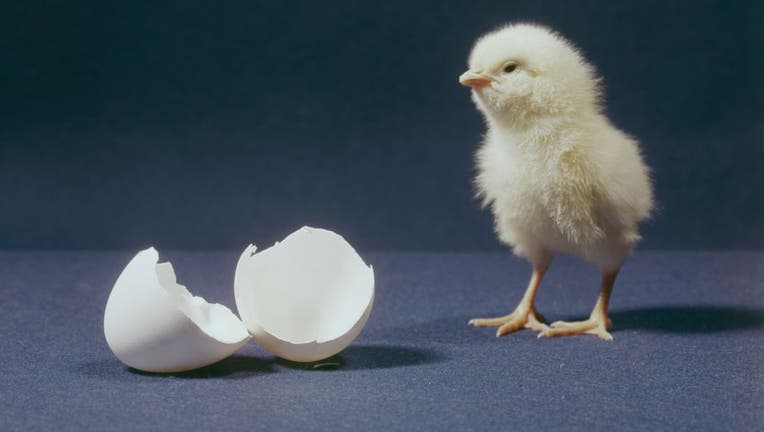Which came first, the chicken or the egg? We may have an answer

Close-up of newly hatched chick
GENEVA - Scientists in Europe said they may finally have an answer, or at least parts of it, to the age-old question: Which came first, the chicken or the egg?
The question is more of a metaphor. In short, researchers at the University of Geneva said they have been experimenting and studying an ancient unicellular organism to learn more about embryonic development.
Science has already proven that the first forms of life to appear on Earth were unicellular organisms, meaning a single cell such as yeast or bacteria, the researchers pointed out. Science has also proven that multicellular organisms, such as animals, started to develop from a single cell, like an egg cell.
RELATED: Giraffes could gain endangered species protections under US proposal
However, scientists said the transition from unicellular organisms to multicellular organisms is still "very poorly understood."
To understand the transition better, study author Omaya Dudin and his team decided to then focus on Chromosphaera perkinsii, or C. perkinsii, which is an ancient unicellular organism.
The cell has been around for billions of years, long before the existence of animals, according to the researchers.
This organism starts as a single large cell that divides repeatedly (a process called palintomy) to form a cluster of cells. These cells later differentiate into three types: swimming flagellated cells, crawling amoeboflagellates, and dividing round cells.
‘‘Although C. perkinsii is a unicellular species, this behavior shows that multicellular coordination and differentiation processes are already present in the species, well before the first animals appeared on Earth’," Dudin explained.
The process is similar to how animal embryos are developed. The discovery suggests that some aspects of animal embryonic development may have evolved in simple multicellular relatives.
The study of C. perkinsii provides key insights into how animal development may have evolved. However, the organism is difficult to study due to its tendency to break apart under lab conditions.
"Future research will be essential to elucidate how spatial cell differentiation is established in C. perkinsii,"the team of scientists said in their paper. "Nevertheless, our study indicates that C. perkinsii represents a transitional form between temporal and spatial cell differentiation, providing insights into the evolutionary mechanisms that led to emergence of animal multicellularity."

